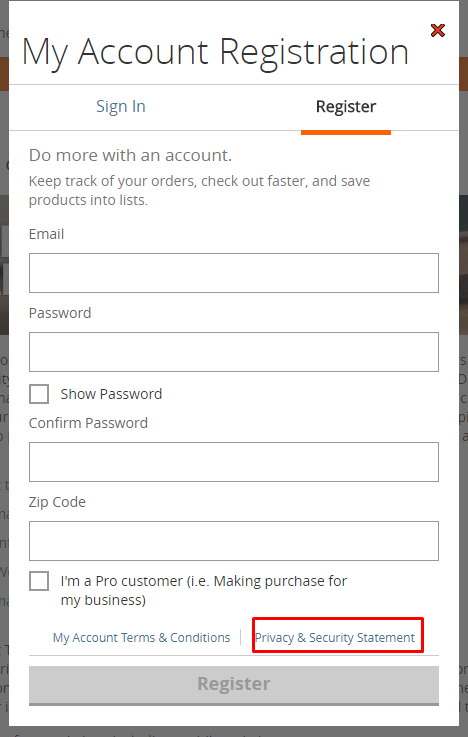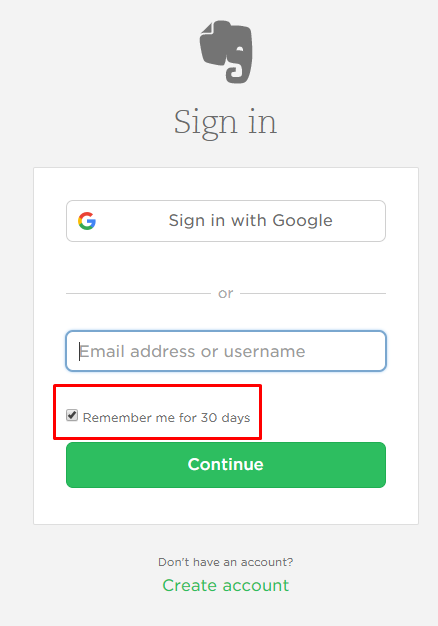
 This is part of the Total Usability Series that was originally published in 2007. A decade later, usability is more important than ever, so we’re revisiting this series and updating all of the articles. This post was updated 10/26/2017.
This is part of the Total Usability Series that was originally published in 2007. A decade later, usability is more important than ever, so we’re revisiting this series and updating all of the articles. This post was updated 10/26/2017.
Sites that require users to log in to access certain information and/or purchase products add an additional layer of complexity to the usability process. To avoid potential visitor confusion and errors, the registration and login process must require little or no thought on the part of the visitor.
To ensure the maximum login ux, make sure your login page has the following:
- Easy login access. The login button/form should be available in the same area on every page of the site. Make the form or link obvious and easily differentiated from other areas of the site.
- Security protocols and assurances. Particularly if the information behind your login contains sensitive data, it’s important to have the appropriate security protocols in place. Your login area should tell visitors exactly what security systems you have in place so they know that you take their information’s security seriously.
- Privacy policy. Provide a link to your site’s privacy information/policy near the login form “Submit” button or email field. This gives your visitors confidence that you will treat their information with respect. Home Depot provides a link on their registration form for their security and privacy measures.

- Registration link. If visitors are not already registered, a link to a new user registration form should be present. It’s also smart to have a global link to “register” for any new visitors to the site.
- List of benefits. Let non-registered visitors know why they should have an account. Otherwise, why are they going to risk their security and take the time to complete a registration? Benefits should be listed on the same page as the new user registration form. Justice provides a long list of compelling reasons to join “Club Justice” on their site.

- Lost password retrieval. All login forms should contain an option to reclaim forgotten passwords and/or usernames. This information must also be passed securely.
- Remember me box. You can provide additional convenience (though less security) by giving visitors the option of checking a “remember me” box which will allow them to stay logged in indefinitely or for a certain amount of time like Evernote does.

- Login status indicator. The visitor’s “logged in” status should be displayed at all times with a ready access to log out at their convenience. When additional security is necessary, it’s a good idea to automatically log them out after a set period of inactivity.
- Ability to change information. Once logged in, visitors should have access to change their user information, including usernames, passwords, contact info, payment details, etc.
- Change confirmation. Once the visitor has submitted their information to be changed, provide a confirmation screen that shows the old and new info. This prevents errors and helps ensure information remains accurate. For instance, if you change an item you’ve subscribed to receive on regular intervals, Target send you an email confirming the change.

- Financial details. Provide links to relevant financial information such as transaction history, invoices, balances, payment methods, etc. Provide a printable version of this information.
- Up-sell opportunities. Visitors that are logged in provide you an interested, captive audience. Consider discreetly utilizing up-sell opportunities – without being overbearing.
- Subscribed services. Provide visitors access to the information/services to which they are subscribed. Also provide additional subscription options, if applicable.
- Information management. Allow users to change the way they receive information, providing alternate methods such as snail mail, HTML, or text-based emails or to turning off communication entirely.
When visitors create an account with you, they’re making a commitment to you. It’s important not to let the usability process break down after visitors are committed. In fact, it’s even more important to treat registered visitors respectfully and appropriately, ensuring they have access to the information they need. This develops long-term relationships and keeps them coming back.
